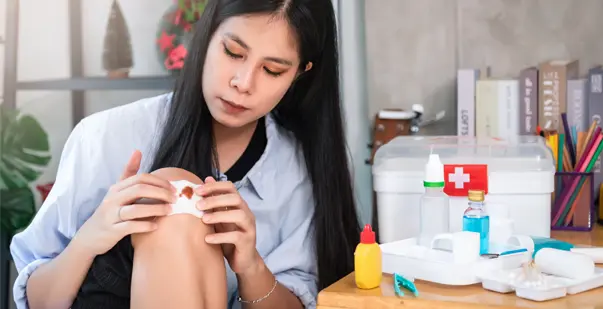
Last Updated On: diciembre 13, 2024
We all know that when you have a wound, first aid is given. However, what is first aid? First aid is an initial intervention prior to professional medical help given to an injured person. If your child falls down and has a wound, first aid is administered. Most school teachers, parents, especially mothers administer first aid to their children without much thought. First aid includes cleaning wounds, cuts, minor scrapes, scratches, removing debris from the eyes, cleaning blisters, accidental burns and applying ointments, bandages and dressings to the wounds. This blog looks at understanding the importance of first aid. We will cover the first aid that needs to be given to minor wounds, burns, nosebleeds and more.

Not all adults know how to provide first aid properly. All adults must know about first aid. Some people need to understand the importance of administering first aid at home. If you have elderly parents, understanding first aid could save their life from a shock or cardiac arrest. Older adults are prone to falls, and they could hurt themselves. Treating their wounds will help reduce damage and heal faster. It is a prerequisite that all middle-aged people in the house must find time and take up an accredited first aid certification from a reputed institute without wasting much time.
When an adult or child falls down, it is crucial to provide quick treatment to an open wound to minimize the risk of infection and scarring. Continue reading the below points to know what you need to do immediately after getting a cut, scrape, wound, gash or any other injury.
You can also use hydrogen peroxide as it is detrimental to wound healing. Here’s how you can use it properly. Hydrogen peroxide works as a wound fighter, disinfectant, stain fighter and cleaner. This antiseptic liquid is the best solution for a scraped knee.
How do you know if you have a minor burn? A minor burn is less than 8 cm in diameter or 3 inches and is typically characterized by pain, swelling, skin redness and blisters. Here are a few ways first aid should be given:
Knowing how to cook food could save you from starvation. Along the same lines, thorough knowledge of how to treat a deep cut without stitches and treating wounds with first aid can save a life and the lives of the people you love. All you need is a first aid certification from an accredited institution and become a superhero. Below are the steps to stop a nosebleed:
While performing first aid, it is important to remember the abbreviation CAB – circulation, airways and breathing. After doing the preliminary checks, call 9-1-1 if the patient’s pulse is faint, if there are breathing problems or if the victim is losing blood or becomes unconscious.
To provide immediate assistance or first aid in the case of injury or to help save a life, it is crucial to think on your toes to prevent further harm in moments that matter.
Understanding and administering first aid is a vital skill that can make a significant difference in emergencies, whether dealing with minor wounds, burns, or nosebleeds. Quick and effective first aid can prevent infections, minimize complications, and provide comfort while waiting for professional medical help. By learning and practicing these essential techniques, you not only safeguard the well-being of your loved ones but also contribute to creating a safer environment for everyone. Enrolling in a certified first aid course ensures you are prepared to act confidently and competently when it matters most.